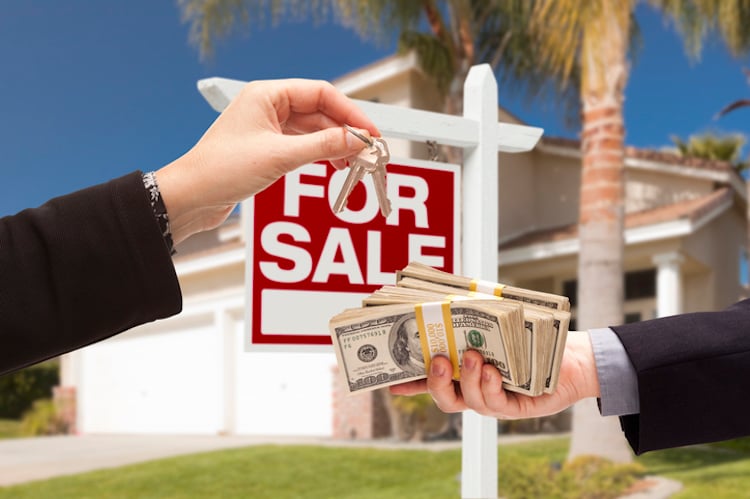One of the biggest challenges to buying a rental property can be coming up with the down payment. So how is it that some investors are able to buy one real estate investment property a year?
Although it may seem like an ambitious goal, buying one rental property per year is possible with the right plan in place. Investors don’t have to be lucky or rich, they need to be SMART.
Key takeaways
- Buying one rental property per year is an example of a SMART goal that is Specific, Measurable, Attainable, Realistic, and Time-bound.
- Investors are able to buy one rental property per year by having a system in place, having a long-term outlook, and using cash flow from one rental as part of the down payment for another.
- Top tips for buying one rental property each year include focusing on single-family homes in a specific price range, reinvesting 100% of the cash flow, and using online tools to find great rental properties.
Why investors buy one rental property each year
While it isn’t always easy, investors who create a good system and have the discipline to buy one rental property per year may find themselves with attractive returns on the money invested.
Here are four of the biggest potential benefits of buying one rental property per year.
1. Easy system to put into action
One of the best things about buying one rental property per year is that the system is a perfect fit for SMART goal setting:
- Specific
- Measurable
- Attainable
- Realistic
- Time-bound
After investing in the first rental property, there isn’t a big learning curve needed to buy another, and another after that. Buying a rental once a year is also a good way to diversify a real estate portfolio by investing in some of the best rental markets across the country to help generate the largest potential returns.
2. Increased cash flow over time
Buying one rental property per year also allows investors to benefit from what the pros call the “snowball effect.” As the name suggests, the total cash flow generated snowballs or gets bigger year after year each time a rental property is added to the real estate portfolio.
Of course, cash flow doesn’t always increase by the same amount year after year. For example, one property may require a major repair, or it could take longer than expected to find a qualified tenant.
3. Encourages a long-term outlook
Another benefit of buying one rental each year is that it forces an investor to have a long-term outlook. Rather than worrying about normal ups and downs in the real estate market, an investor focused on owning 20 homes at the end of 20 years may be more likely to seize the opportunity offered if housing prices decline.
As the Federal Reserve reports, back in the first quarter of 2001 the median sales price of houses sold was $169,800. Today the median sales price of a house is $374,900, more than double what prices were 20 years ago.
However, home prices have declined twice over the last two decades. The first time was during the Global Recession of 2007 -2009 when prices dropped by about 20%. During the most recent recession in 2019, home prices declined by about 6% before beginning to rise again.
4. Tax benefits can be significant
One of the most appealing tax benefits of investing in rental property is the depreciation expense. The IRS allows real estate investors to deduct 3.636% of the property value each year for up to 27.5 years (excluding the value of the lot or land) as an allowance for wear and tear, deterioration, or obsolescence.
Depreciation is deducted from the net income generated by the rental property. In some cases, an investor may have positive cash flow yet have very little taxable net income.
For example, assume an investor purchases a rental property for $120,000. If the lot value is $10,000 the annual depreciation expense is $4,000:
- $110,000 x 3.636% = $4,000
If the rental property generates an annual pre-tax income of $5,000 an investor could deduct $4,000 in depreciation expense, and only pay tax on the remaining $1,000 of income.
In addition to depreciation, other tax benefits of owning rental property include deductions from pre-tax income for normal operating expenses, interest and property taxes, insurance, and owner expenses like continuing education and business-related travel expenses.
How to buy one rental property per year
Now let’s look at how an investor could buy one rental property per year over the next five years using the “wash, rinse, and repeat” strategy for investing in real estate.
We’ll assume an investor pays $70,000 cash for the first rental property. All of the annual cash flow from the property is saved and applied to the down payment for the next rental property, with the investor going out of pocket for the remainder of the down payment.
For example, in Year 2 in the chart below, the investor purchases a second rental property for $100,000. The annual cash flow of $5,000 from the first rental property is used for part of the down payment, and the investor pays the remaining $20,000 using personal funds.
Assumptions made
- Single-family rentals were purchased from the Roofstock Marketplace.
- Down payment is 25% of the purchase price.
- Cash from rentals is the cumulative net cash flow from all rentals applied to the down payment in the following year.
- Net cash flow is calculated by subtracting the operating expenses and mortgage payment from the rental income.
- Cash out of pocket is additional money contributed by the investor for the balance of the down payment.
- Rental income includes a vacancy rate of 5%.
- Mortgage expense is based on a 4% investment property interest rate and a loan term of 30 years.
- Operating expenses include costs such as property management and leasing fees, maintenance, property taxes and insurance, and contributions to a capital expenditures (reserves) account.
Items not included
- Closing costs such as an appraisal, inspection, and loan fees to purchase the property.
- Annual rent increase or decrease.
- Operating expenses increase or decrease.
| Year 1 | Year 2 | Year 3 | Year 4 | Year 5 | |
| Purchase price | $70,000 | $100,000 | $125,000 | $130,000 | $139,000 |
| Down payment | $70,000 | $25,000 | $31,250 | $32,500 | $34,750 |
| Cash from rentals | $0 | $5,000 | $7,100 | $11,200 | $13,900 |
| Cash out of pocket | $70,000 | $20,000 | $24,150 | $21,300 | $20,850 |
| New rental income | $9,000 | $11,400 | $16,000 | $15,500 | $14,800 |
| Total rental income | $9,000 | $20,400 | $36,400 | $51,900 | $66,700 |
| New operating exp. | $4,000 | $5,000 | $6,500 | $7,200 | $5,700 |
| Total operating exp. | $4,000 | $9,000 | $15,500 | $22,700 | $28,400 |
| New mortgage exp. | $0 | $4,300 | $9,700 | $15,300 | $21,300 |
| Total mortgage exp. | $0 | $4,300 | $9,700 | $15,300 | $21,300 |
| New cash flow | $5,000 | $2,100 | $4,100 | $2,700 | $3,100 |
| Total cash flow | $5,000 | $7,100 | $11,200 | $13,900 | $17,000 |
Based on the above example, an investor would need to set aside about $2,000 per month to purchase one rental property a year, after paying cash for the first investment property.

10 tips for buying a rental property
Buying one rental property per year can be a profitable strategy, provided it’s done correctly. Here are 10 tips investors follow for buying a rental property each and every year:
- Stick with single-family homes. They can be easier to finance, easier to buy and sell, and everyone knows how a home “works.”
- Stay within a consistent price range. Setting aside the right amount of money for the down payment each year is much easier when homes are purchased in a certain price range. In the example above, every rental is worth less than $150,000.
- Use online tools for finding potential properties. Roofstock has hundreds of single-family rental properties listed for sale. Many are already rented to tenants, which means that investors start collecting rental income the day that escrow closes.
- Analyze the impact of cash versus leverage. In the example above the first rental property was low-priced and purchased for cash to jump-start the annual cash flow. While using leverage can be a powerful tool, investors always crunch the numbers to explore different financing scenarios, including paying in cash.
- Reinvest 100% of the cash flow. The key to buying one rental property per year is to not touch any of the rental income. Instead, pretend that it doesn’t exist, to make sure the funds are available for the next down payment.
- Research variables that could affect cash flow. Many investors avoid homes that require a significant amount of immediate repairs and houses in states with high property taxes. Some variables can work in an investor’s favor, such as real estate markets where rents are rapidly rising due to strong population growth and pro-business governments.
- Consider hiring a local property management company. A good property manager understands state landlord-tenants laws, the Fair Housing Act, security deposit rules, how to avoid having to evict a tenant, and how to manage properties to maximize profits.
- Keep CapEx accounts funded. Investors keep a reserve account for each rental property that holds funds for future capital expenses or repairs. Budgeting for the unexpected makes it much easier to stick with the plan of buying one rental property per year.
- Renew leases at market rents. Rent prices in most real estate markets today are increasing year-over-year. Landlords who don’t run rent comparables before renewing a lease risk leaving money on the table.
- Monitor financial performance. Even with a good local manager for each rental property, investors still keep an eye on financial performance at the property and portfolio level. A free rental property financial management system like Stessa helps investors to maximize profits with real-time insights based on the real estate portfolio and investment strategy.
Final thoughts
Although it might seem like an audacious dream, buying one rental property per year is doable with the proper plan in place. Investors can gradually scale up a real estate portfolio and generate annual rental income to help fund the down payment for more rental property each and every year.










